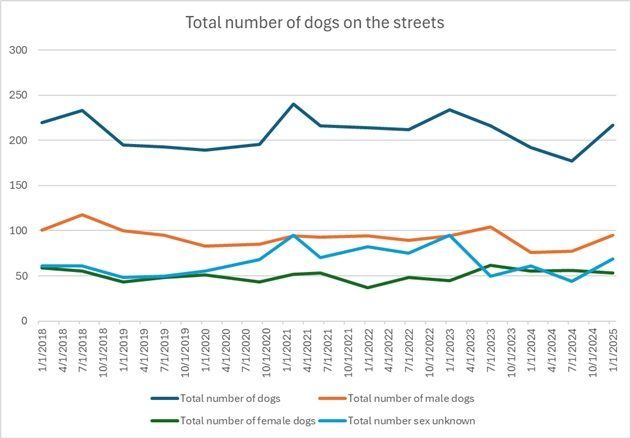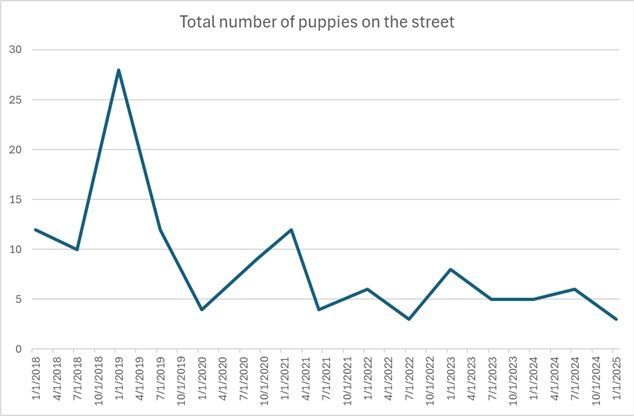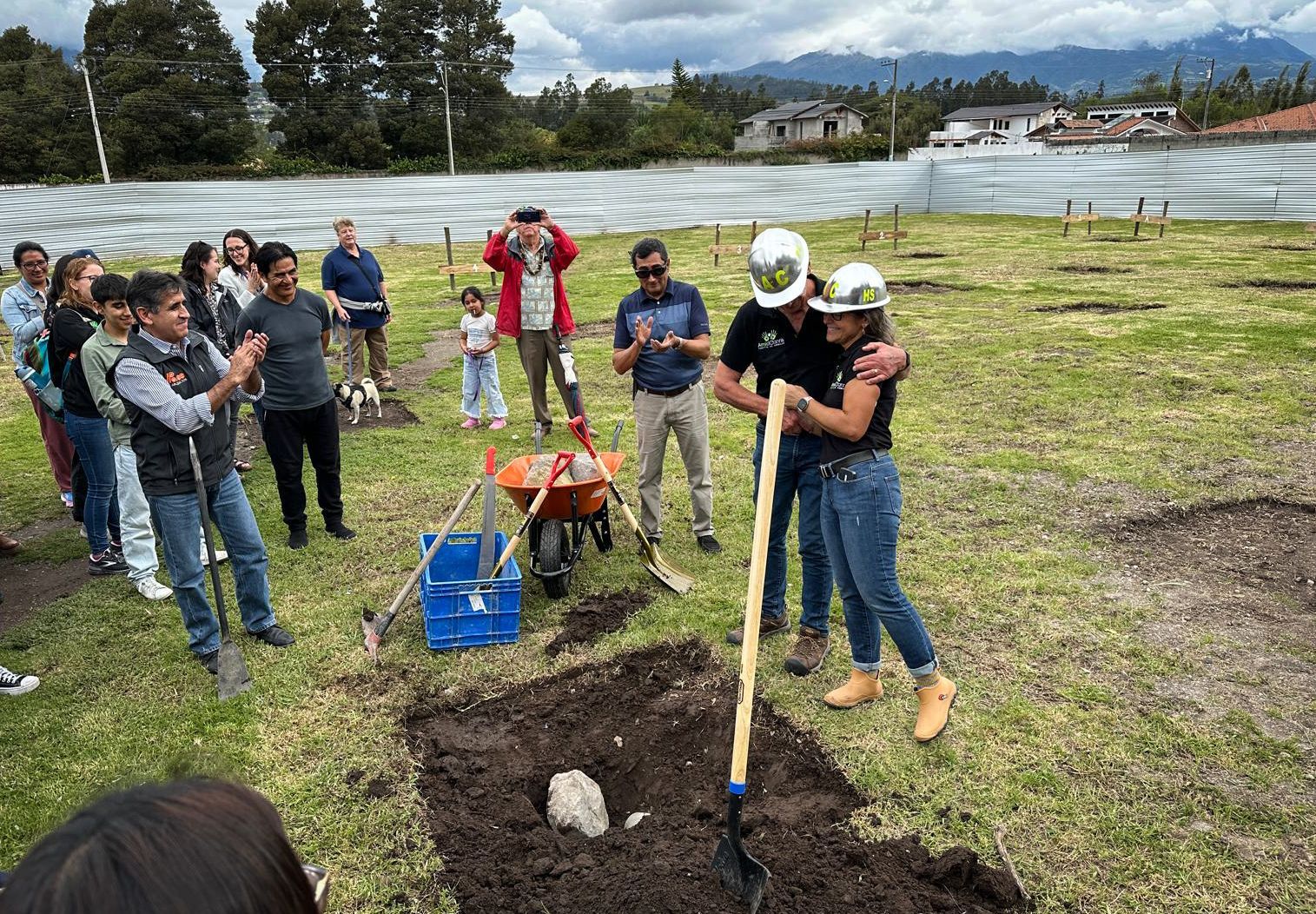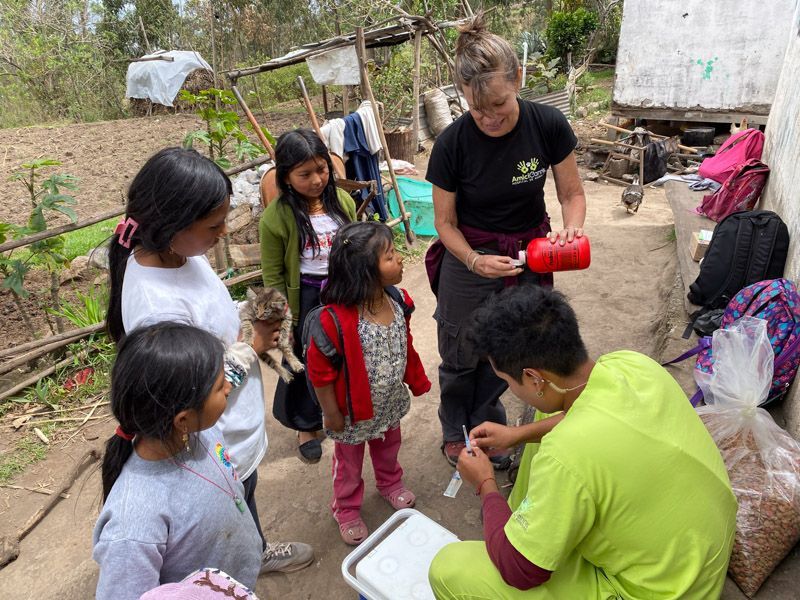The importance of a street dog survey

Our 2025 survey results are in!
Street dog populations can be difficult to manage due to a variety of factors, including overpopulation, disease, lack of access to veterinary care, and cultural attitudes toward animals. Without accurate data, it’s nearly impossible to assess the scale of the issue and develop effective strategies to address it. This is where street dog surveys become essential, and why our bi-annual survey is a key component of our dog population management efforts.
Twice a year, a team of Amici Canis volunteers in Cotacachi comes together to conduct a survey in the area where we operate, gathering vital data about the street dog population, such as the number of dogs and their health.
During this January survey, there were no surprises regarding the animals’ body condition score, with 74% of the dogs scoring 3/5, which is considered a healthy weight according to veterinary standards. The population of puppies and lactating females on the streets remains low and stable, with only three puppies counted. The population of intact male dogs (unneutered) increased to 37% in 2025, up from 25% in 2024.
This year, we observed a 12% increase in the total number of dogs seen on the streets, from 192 in January 2024 to 217 in January 2025. However, the number remains stable when compared to the surveys conducted between June 2021 and June 2023, when the total number of dogs counted was 216.
A survey showing a decline in the population of street dogs one year, followed by a rebound to the same number as the previous years, could be influenced by various factors. Some possible causes include:
Shifting population: Street dogs often move between regions in search of food, shelter, or safety. A temporary decline might have occurred if dogs moved to different areas (perhaps due to construction, human activities, or changes in urban planning). Over time, the dogs might return to the original location, restoring the population numbers.
Public awareness: Changes in public perception or increased involvement of local communities in feeding or caring for street dogs could influence the population size.
Epidemic or disease: A disease outbreak (such as parvovirus or distemper) could cause a temporary reduction in the street dog population, but the population may rebound in subsequent years as the disease runs its course or new dogs arrive.
The vacuum effect is a phenomenon that occurs when street dog populations are managed or reduced (through methods like sterilization, adoption, and natural attrition) and the population quickly rebounds to previous levels or even increases beyond the original numbers. Street dogs are territorial animals, and when a group of dogs leaves a particular area, it leaves an empty "territorial vacuum."
Other dogs from surrounding areas, or new dogs, will often move in to occupy this available territory, either because the area is now vacant and suitable for living or because there is a sudden increase in food sources.
These new dogs may not have been in the area before, and their arrival can quickly fill the void created by the absence of the original dogs.
Amici Canis can work in a variety of ways to address the increase in street dog numbers from June of 2024. A holistic approach involving sterilization, community engagement, veterinary care, and public awareness is the most effective long-term solution. Our team will target the areas of Cotacachi that saw an increase in street dogs from 2024, and we will enlist the help of the community in identifying new and unaltered dogs to be sterilized through our Veterinary Care for Community Dogs Program.












